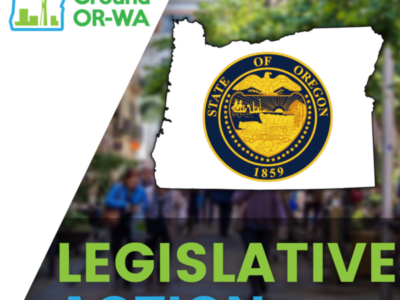The Power of the Land Value Tax
Strong Towns Media
Excerpt:
You’re probably familiar with the phrase, “No good deed goes unpunished.” Turns out, that’s a pretty good description of how our current tax system works when it comes to building towns and cities.
Property taxes incentivize precisely the wrong kind of development. By this we mean the ever-outward expansion that is stretching (and thinning) our communities—making us more reliant on cars, damaging the environment, driving up the price of potential farmland, encouraging land speculation, and putting current and future generations on the hook for costly infrastructure that must be built, maintained, and replaced in perpetuity.
If only there was an alternative approach to generating revenue that would dis-incentivize suburban-style development, while spurring the intensification of our core neighborhoods and making the land we already have more productive.
Well, there is.
It’s sometimes called the land value tax. The land value tax is based only on the assessment of the value of a piece of land. In contrast, conventional property taxes tax not only the land but also the buildings and other improvements on the site. This acts as a disincentive to put land to productive use—meaning more empty lots and more parking lots.
Late last year, Strong Towns senior editor Daniel Herriges facilitated a webinar with Rick Rybeck, one of the foremost authorities on the land value tax—or as Rybeck prefers to call it—for reasons he gets into—land value return and recapture (LVRR). The founder of Just Economics, LLC, Rybeck is an attorney with a master’s degree in real estate and urban development. He spent 12 years as the Deputy Associate Director for Transportation Policy & Planning at the District of Columbia Department of Transportation.
In the webinar, Daniel and Rick Rybeck discuss the “infrastructure conundrum,” how conventional property taxes actually chase away the very kind of development we most need, and why the LVRR is the simple (yet brilliant) alternative. Rybeck gives examples of several communities—rural and urban alike—who have already implemented versions of the LVRR (some going back more than a century) and what we can learn from their example.
After watching the webinar, make sure to check out some of our past content on the Land Value Tax. This includes:
- Chuck Marohn’s 2014 interview with Rick Rybeck
- Our Land Value Tax series from last year
- Chuck’s six-minute explainer video on the Land Value Tax from 2012
- …and more.
Top image of Cedar Avenue (Pittsburgh, PA) via Wikipedia.
Let’s live on the planet as if we intend to stay




